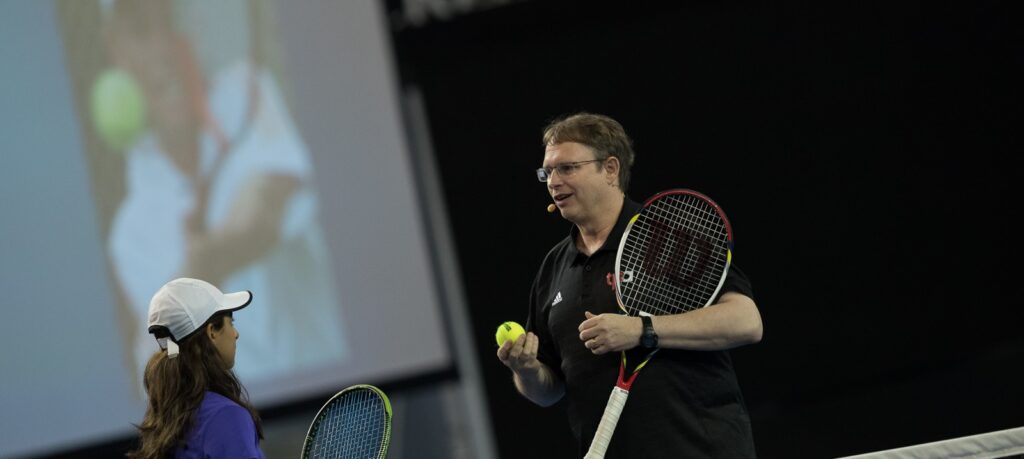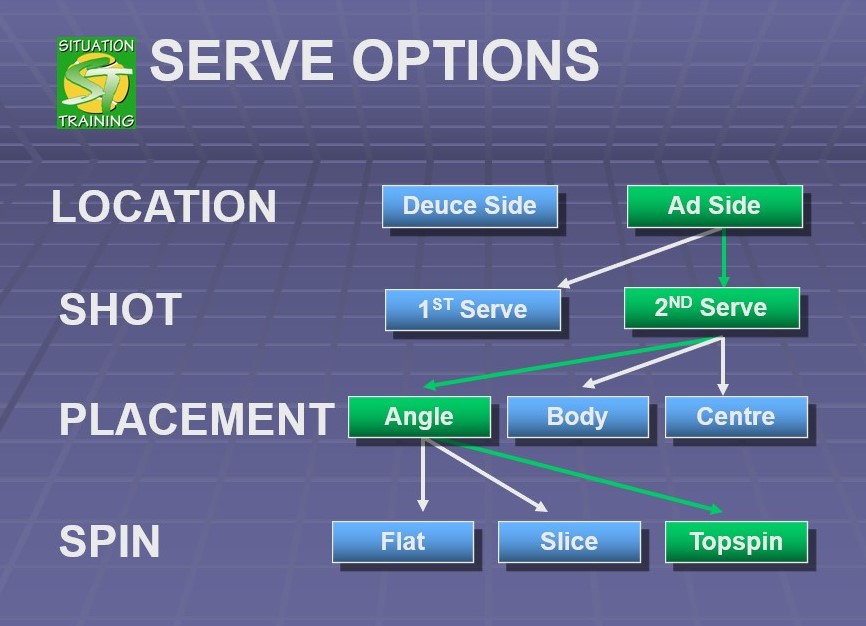

Photo credit: Front Row Studios -2017 Australian Open Grand Slam Coaches Conference
Situation Training (ST) is a practical application of the international coaching trend called the Game-based approach. It allows players to learn the tactics and techniques required for successful play in real-life situations.
ST is about learning tennis situationally. It logically integrates tactics and technique. It helps coaches evolve from being ‘stroke coaches’ to ‘game coaches.’ In contrast to ‘stroke-coaching,’ ST is about helping players learn to expand the library of situations they can handle during play.
This article will delve into the tactics and shots for the Serve Point Situation. The goal is to identify the most common shot situations that allow players to dominate when initiating a point with the serve.
There is one critical question coaches need to attend to before launching into serve development. ‘Is optimal biomechanical efficiency the true goal of the serve?‘ In closed skill development, everyone looks the same. There are perfect versions of skills in gymnastics, diving, etc. Players are judged on their conformity to ‘perfection’. However, it is interesting to note that what we actually observe in professional players (whose livelihood depends on getting the job done) are all sorts of variations. Have so many of them just ‘missed the point’ (for sure, some have poor serves) or are coaches the ones who have missed the point?
In my opinion, it is not about developing ‘the serve’ but developing ‘serving’. The true goal of the serve is tactical. Players need to be able to produce the options in variable combinations to win points. They need to do it in ways that fit their style while also mixing it up in unpredictable combinations to create uncertainty in the returner.
There are multiple options that create various serving situations. Here is an ‘Options tree’ that shows the combinations. A specific situation is created by tracing the options down the tree. For example, an Ad side/2nd serve/Angle/Topspin serve is shown in green. There are 36 possible serving situations that all need technical modifications. Adaptation (in contrast to biomechanical efficiency) is essential.

Serving is situational. For example, ad-side serves are important since more game-winning or losing points occur. 1st Serves often allow slightly more ‘risk’ since a miss will not cost a point. 2nd serves need to, at minimum, neutralize an opponent. The placements set up the geometry of the possible returns. The spins create challenging trajectories for opponents. These are all tactical concepts.
For developing serving, the serve should not be disconnected to the next shot. Statistics show that a majority of points end within the first four shots. This means the serve and 1st shot become a critical ‘combination’ to practice.
Check out the full article to see the various tactical options, the ‘Tactical Packages’ that we can put together for serve development and the ways to practice serve as a ‘partially open’ skill.
Leave a Reply